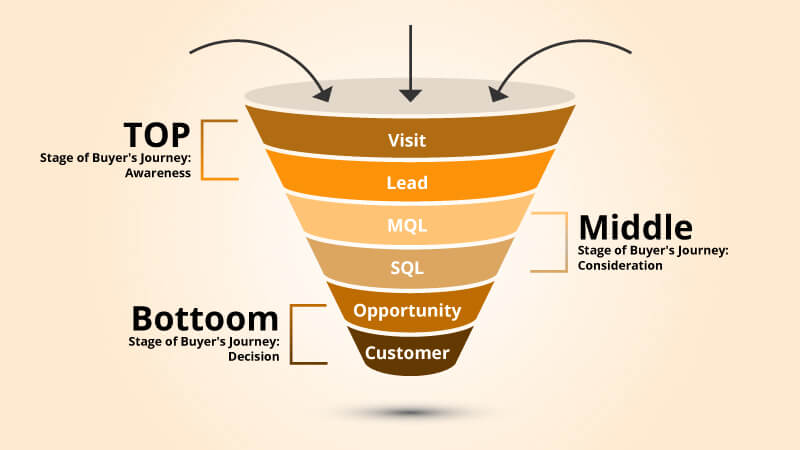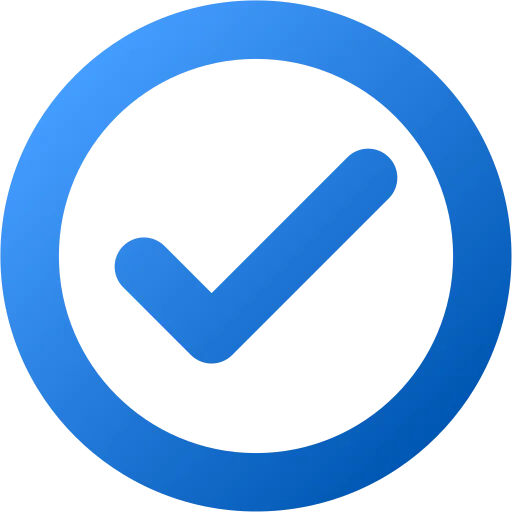
Lead generation is an important aspect of client acquisition. It is the primary goal of every marketing effort. You’ve definitely heard of lead generation and how entrepreneurs and marketers are all over it, maximizing its power and tailoring it to your exact specifications. But how much do you know about B2B lead generation and its potential to redefine the term entirely?
It’s fine if you don’t understand everything right now, but by the conclusion of this post, you’ll be well on your way to producing B2B leads like a pro.
Let’s start with a definition of what a lead is.
What Exactly Is a Lead?
Table of Contents
A lead is a potential customer who has expressed an interest in your product or service. Because these leads do not have equal status, they are not classified as the same. As a result, leads are categorized according to their quality and conversion stage. These are some of them:

Top Of The Funnel (ToFu):
This level mainly relates to digital techniques for bringing fresh visitors and prospective leads into your marketing funnel without really distressing or censoring discussions. At this stage, your major focus should be on answering their problem or alleviating their pain point, rather than attaching the objective to a sale. Your blog entries are the most typical example.
Marketing Qualified Leads (MQLs)
Marketing Qualified Leads (MQL’s) are clients that have been reached via your marketing efforts but have not yet been contacted by a salesperson. A visitor who is drawn to your offer and completes the form on your landing page is an example.
Leads in the Middle of Funnel (MoFu)
Potential leads would arrive at this funnel after passing through the ToFu stage. It’s frequently the most challenging stage since the variety of interested leads might take many different directions. You should continue to educate the lead on the solution and promote your firm as a possible solution provider at this stage. Consider sophisticated ebooks, case studies, webinars, white papers, and other similar materials.
PQLs (Product Qualified Leads)
They are previously tested your services and are willing to spend extra. Businesses that offer expandable enhanced versions frequently use PQL. Your sales staff may take control at this point.
Service Qualified Leads
Your service staff piques these prospects’ curiosity in becoming a paying client. They do this by informing your customer support agent of their desire for a service upgrade, who then leads them to the relevant sales quarters.
Bottom of the Funnel (BoFu)
This is the most important step (also known as the decision stage) because it is here that you will make the transaction. In many sectors, this stage may never happen since you will be quite comfortable interacting with customers one-to-one by then.
Sales Qualified Leads (SQLs)
These leads are more likely to purchase your product or service. They will either inquire about your goods or fill out the necessary paperwork. To start the conversation, you may give a free trial, evaluation, or assessment of your product or service, and then convert your completely qualified leads to paid consumers.
What Is B2B Lead Generation and How Does It Work?
Lead generation is the process of identifying, evaluating, and attracting prospective clients to your product or service. To put it another way, it’s the application of common strategies to attract people to your firm and then convert them.
It’s a system that not only recognizes and invites customers, but also categorizes and filters them based on their level of interest in purchasing from you.
Must Read: The Top 7 Reasons to Syndicate Your Content
The following are some of the most important aspects of B2B lead generation:
- Identifying businesses that would benefit from your product or service.
- Using various marketing tactics to attract potential clients.
- Identifying the decision-makers who need to be engaged.
- Prospects are screened depending on how closely they fit the buyer profile or show interest in your offers.
You may do it yourself or delegate it to a lead generation partner, relying on your preferences. The procedure necessitates that you have a clear idea of the type of clients you seek.
Determine which market kinds are the most crowded. Make contact with such marketplaces and give them something in exchange for client information such as phone numbers and email addresses. This information may then be utilized to send an email campaign.
You’ll start seeing results from this process in a registry of new clients you start getting, depends entirely on the quality of leads you can create and their degree of predisposition towards your business or service.
While doing lead generation yourself saves money, outsourcing it to the correct lead generation partner provides your company with the benefit of a professional approach. You also save effort on leads, making it much easier to convert them into committed clients.
What Is The Purpose Of A Lead Generation Process?
A lead generating method helps you move a step closer to the type of consumer who will buy your services and products on demand. This isn’t to say that you won’t be able to close sales if you don’t generate leads. You have a better chance of reaching your target consumers in less time if you have a lead generating procedure in place.
In addition, lead generation:
- By evaluating a customer’s buying habit and directing them to you using up-to-date technologies, you can lay the groundwork for long-term partnerships and loyalty with them.
- Allows for quick changes to your customer acquisition strategy, depending on how responsive it is or not.
- Improves your ROI, reduces your sales cycle to a more manageable length, and increases your client acquisition rate.
How Do You Determine A Good Lead?
According to Dream Factory Agency “Not adequately qualifying prospects before taking them through the sales process leads to 67 percent missed revenues,” stated keynote speaker Steven Tulman.
To qualify someone as a lead, you must recognize or recall the following crucial components:
- What is the customer’s need that your product/service can address?
- Uniqueness – Can your product or service meet the needs of the customer?
- Is your customer’s budget sufficient to cover the cost of the product or solution?
- Timeline – How much time do you have to help your customer address the problem?
- Influence – Is your consumer the one who makes the ultimate choice in the purchasing process?
Conclusion
To summarize, any marketing strategy’s effectiveness can be judged in terms of the volume and, more crucially, the quality of leads it generates. Despite the wealth of data on how to create leads available online, most marketers still struggle to produce high-quality leads and fail to achieve their marketing goals. This is where this tutorial will come in handy.
What is your take on this and what is your say about lead generation? Let us know in the comment section.
Must Read: The Ultimate Lead Generation Content Syndication Strategy

Vikas Bhatt is the Co-Founder of ONLY B2B, a premium B2B lead generation company that specializes in helping businesses achieve their growth objectives through targeted marketing & sales campaigns. With 10+ years of experience in the industry, Vikas has a deep understanding of the challenges faced by businesses today and has developed a unique approach to lead generation that has helped clients across a range of industries around the globe. As a thought leader in the B2B marketing community, ONLY B2B specializes in demand generation, content syndication, database services and more.


